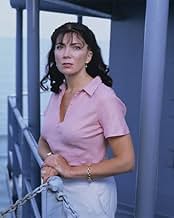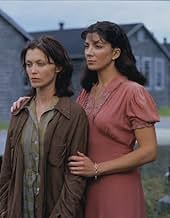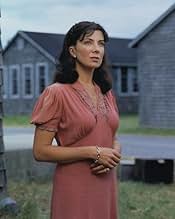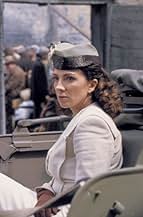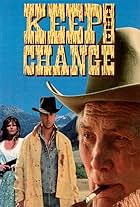A U.S. official escorts Holocaust refugees from 1940s war-torn Europe to temporary shelter in America.A U.S. official escorts Holocaust refugees from 1940s war-torn Europe to temporary shelter in America.A U.S. official escorts Holocaust refugees from 1940s war-torn Europe to temporary shelter in America.
- Nominated for 3 Primetime Emmys
- 3 wins & 11 nominations total
- Director
- Writer
- All cast & crew
- Production, box office & more at IMDbPro
Featured reviews
This is the story of a woman of great courage and compassion. The acting was excellent. I, however, felt clubbed to death by every anti-Jewish cliche known. I lived in the mid-west during the time of this movie's setting and had several Jewish friends. I rarely ever saw the unkind responses shown in this movie. In fact the only times that I ever heard negative comments about Jews were in a few adults who were prejudiced about equally between all the groups different than their own. In this regard, the movie is little different than many "black" movies that go to extremes to show victimizing of their class.
This story was just amazing. It touches you and helps you realize things about the War that would have never thought. How people suffered and how one woman wanted to help them. Natasha Richardson and Tamara Gorski are woman who I have seen in movies before and loved. They both did an awesome job in this movie as did everyone else. If you get the chance, take a look. I thought at first this would be a boring story I would have no intrest in. I was wrong. It's amazing.
The similarity of roles played by Liam Neeson in "Schindler's List" and Natasha Richardson in "Haven" is apparent (one hero, the other heroine) saving Jewish lives. "Haven" draws the viewer in by focusing on America's neglect for rescuing Jewish families from Hitler during WW2. This movie tells an equally powerful story of the lives of Jewish families that needed restoration during/after the holocaust. This movie reminds us what the word holocaust actually means, both for those lives taken and for those lives left behind. Well told story, with great supporting acting from Hal Holbrook, Anne Bancroft, etc.
You should also read the book. This was a movie based on a book and not a documentary. There is such an anti-American slant to this movie that it makes this more propaganda, as others above have said. It seems to portray both the American people and the American government as almost as anti-Semitic as Nazi Germany was. That is overly simplistic. While the State Department was very unfriendly to the Jews, Interior was not. While the US government was not particularly welcoming, the American people were. Mrs. Gruber, who didn't have a German boyfriend in the book, said that the events in this movie didn't happen that way. The refugees were selected by diversity, not age or pregnancy status. In fact, one child was born on the truck on the way to the ship. The no fraternizing command on the ship was just temporary, to avoid trouble. The variety show they put on for the troops was not in the movie. They didn't rush the mess hall but the quantity of food was so enormous, they didn't understand until they were told that was the way they feed the Army. During the submarine scene, no one freaked out and no babies were born. There was no trouble between the troops and refugees and there was no Seig Heil scene. This movie IS an insult to the people of Oswego who welcomed these refugees with open arms. When they arrived by train, it was 7:30 AM and they were greeted with milk and cookies handed to them on the train. Thus the Treblinka-like spot-lights were not there, although there was a fence. These were not barracks but apartments the Army built for them. They were not all Jews and they had Christian services at the post chapel and they built a small synagogue. They had boy scouts, girls scouts, a wedding, celebrated Christmas, had a bris (ritual circumcism), and had a bar mitzvah. Although the anti-Semitism of the State Dept is legendary, just as it was true that more German POWs were brought here than refugees, it is also true that Eleanor Roosevelt and Elinor Morganthau visited the camp and Mrs. Roosevelt was responsible for their being able to get an education. Why Roosevelt did so little has inspired books on the subject. Perhaps it was his just punishment not to be able to live to see the end of the war. But he appointed people with sensitivity to prejudice, including Harold Ickes, who had been the chairman of the Chicago branch of the NAACP, to high government positions and kept the country united. No president either before or after has been able to do that. But back to the movie, mention should have been made of the enormous contributions to America in science, the arts and medicine by these refugees. One final dig at the State Dept - State remained intransigent to the very end, not allowing the refugees to apply for citizenship in America. Mrs. Gruber did not have to convince President Truman nor did she meet with him. It was Gruber's and Ickes letters to the media that changed government policy. It took months to get around this, but they eventually found a solution to our arcane immigration rules by putting the refugees on a bus and crossing the Rainbow Bridge into Canada, and then they were immediately allowed back into America permanently. Seventy communities across the country then offered to resettle them. Does this sound like all of America was anti-Semitic? I think not. Fort Ontario in Oswego is now a museum. If you enjoyed this movie at all, and I did, you should do yourself a favor and read the book, which is readily and inexpensively available at Amazon.com.
This movie is based on the book of the same name of a woman who worked for the Secretary of the Interior (Ickies) who claimed in the book "to not have met a Jew until he was 16" which could have added to the alienation felt by the nearly 1000 Jews and Christians brought to Oswego, New York in 1944. This movie appears like a soap box from which a very non -Jewish looking Richardson hears the evils of the Nazis during WWII screams at the past, not to real people in the State Department (who definitely knew the Nazis were up to something in the late 1930s/early 1940s). However the point of the book was to not show hate against many of the Americans in the story. The people of Oswego, New York in this movie are shown as communist and disease fearing people who are acting like, "why did this happen to us?". However, in the book they met with their new neighbors as best they could: throwing food/clothes over the fence which separated the two peoples. Many dramatic opportunities were passed up in the story, including the variety show, in which the refugees gave a show for the soldiers on the boat they shared passage.
Could have been much better, if they had stuck to what had happened and read the book about the real Ruth Gruber a truly amazing woman who is not done justice here.
Could have been much better, if they had stuck to what had happened and read the book about the real Ruth Gruber a truly amazing woman who is not done justice here.
Storyline
Did you know
- ConnectionsFeatured in The 53rd Annual Primetime Emmy Awards (2001)
Details
- Release date
- Countries of origin
- Language
- Also known as
- La fuerza de una mujer
- Filming locations
- Production companies
- See more company credits at IMDbPro
- Runtime3 hours
- Color
- Sound mix
- Aspect ratio
- 1.78 : 1
Contribute to this page
Suggest an edit or add missing content


